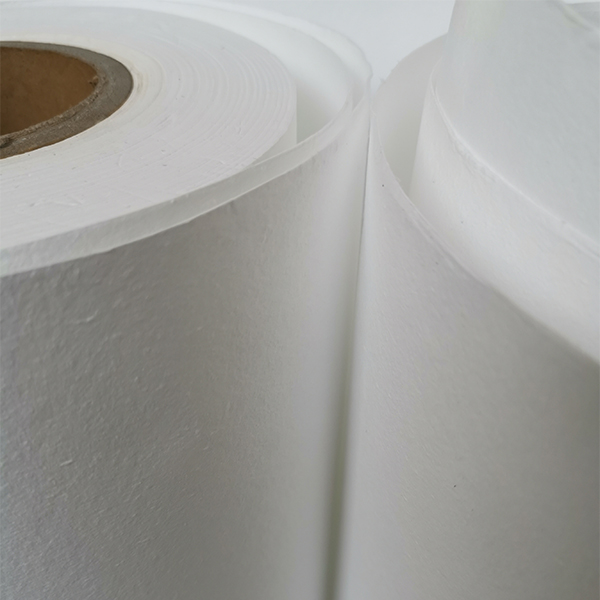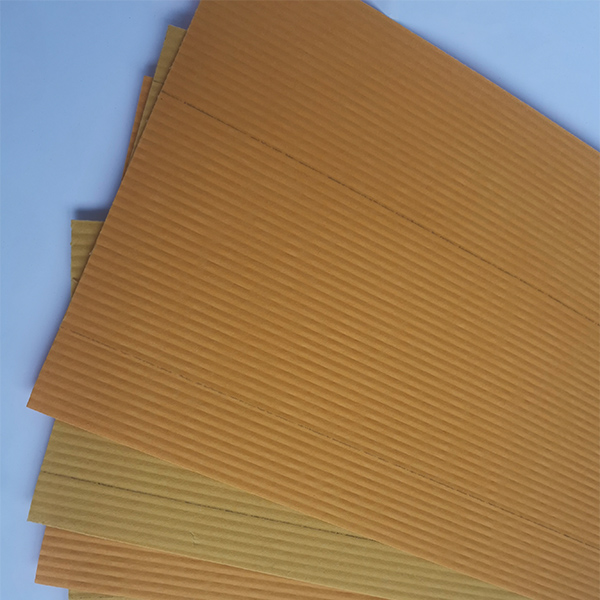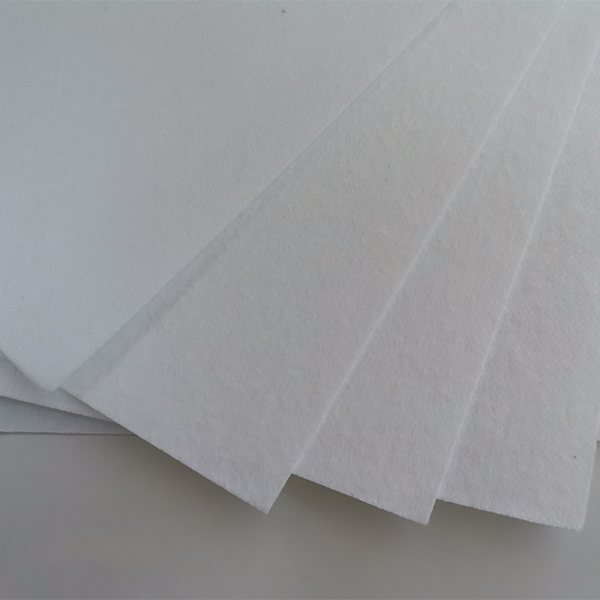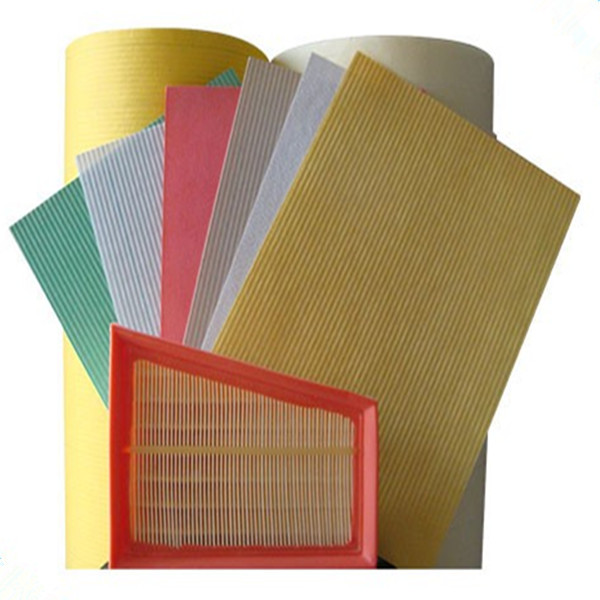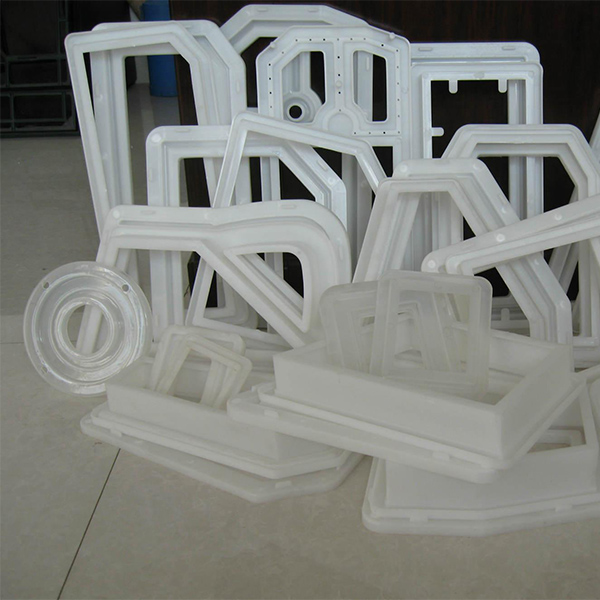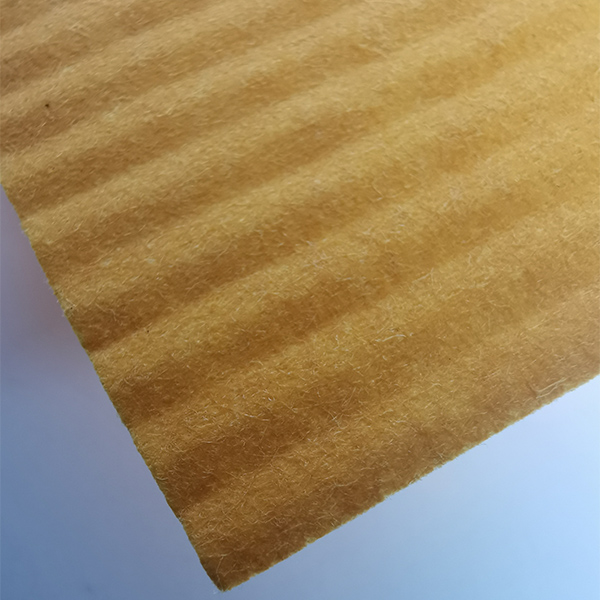Innovating Air Filtration: The Evolution of Pleating Technology
In the intricate world of air purification, High-Efficiency Particulate Air (HEPA) filters stand as a critical component, safeguarding environments from microscopic contaminants. The efficacy of these filters is directly tied to the precision and density of their pleated media, a feat accomplished by advanced pleating machinery. A state-of-the-art hepa pleating machine is no longer just a manufacturing tool; it is the cornerstone of producing filters that meet the stringent demands of industries ranging from pharmaceuticals and healthcare to aerospace and microelectronics. The global HEPA filter market is experiencing robust growth, projected to exceed USD 10 billion by 2027, driven by increasing awareness of air quality, tightening environmental regulations, and the proliferation of cleanroom applications. This surge directly amplifies the demand for sophisticated pleating solutions capable of handling diverse media types, ensuring consistent pleat height, precise spacing, and optimal filter efficiency. Companies investing in cutting-edge pleating technology are positioning themselves at the forefront of this vital industry, contributing significantly to global health and safety standards by enabling the production of superior air filtration products.
The technological advancements in hepa pleating machine design have been profound, shifting from manual or semi-automated processes to fully automated, high-speed systems integrated with intelligent control. Modern machines incorporate servo-driven mechanisms for unparalleled accuracy, real-time monitoring of pleat parameters, and adaptable configurations to accommodate a wide range of filter media—from fiberglass and synthetic composites to PTFE and melt-blown fabrics. This evolution ensures not only higher production throughput but also a significant reduction in material waste and an enhancement in the overall quality of the final HEPA filter. The emphasis on automation and precision is particularly crucial for Ultra-Low Particulate Air (ULPA) filters, which require even finer pleat geometry to achieve their exceptional filtration efficiencies. As industries worldwide continue to prioritize cleaner environments and stricter air quality standards, the role of sophisticated pleating machinery becomes ever more indispensable, shaping the future of air purification technology and pushing the boundaries of what is possible in particulate filtration.
The Intricate Engineering: Manufacturing Process of a Pleating Machine For Hepa Filters
The construction of a high-performance hepa pleating machine, such as the Pleat Machine For Hepa Filters, involves a meticulous multi-stage manufacturing process, ensuring its longevity, precision, and reliability in demanding industrial environments. The journey begins with the selection of premium-grade materials, typically high-strength alloy steels and aerospace-grade aluminum, chosen for their durability, corrosion resistance, and dimensional stability. Key structural components, such as the machine frame and critical moving parts, often undergo advanced manufacturing processes like precision casting or forging to achieve superior mechanical properties and reduce internal stresses. For instance, the main drive shafts and gear components, which dictate the precision of the pleating action, are typically forged from specialized tool steels and subsequently hardened through heat treatment processes like carburizing or induction hardening to enhance wear resistance. This foundational material engineering is critical because the machine's operational accuracy depends heavily on the rigidity and stability of its core structure, resisting vibrations and deformations over millions of operating cycles.
Following the initial material forming, complex geometries are achieved through extensive Computer Numerical Control (CNC) machining. This includes multi-axis milling, turning, and grinding operations, where tolerances can be as tight as ±0.005mm for critical components like pleat rollers, creasing knives, and guide rails. These precision components are essential for consistent pleat height, uniform pleat spacing, and minimal media stress during the pleating process, directly impacting the final filter's efficiency and lifespan. Post-machining, surfaces undergo specialized treatments such as hard chroming, anodizing, or plasma nitriding to further enhance wear resistance, reduce friction, and provide robust protection against corrosive media or cleaning agents. Each manufactured part then undergoes rigorous quality control, employing Coordinate Measuring Machines (CMMs) for dimensional verification, Rockwell and Brinell hardness testers for material property checks, and non-destructive testing (NDT) methods like ultrasonic inspection for internal defects. The entire assembly process adheres strictly to international standards such as ISO 9001 for quality management and ANSI/ASME for mechanical design, ensuring every Pleat Machine For Hepa Filters meets global benchmarks for performance and safety.
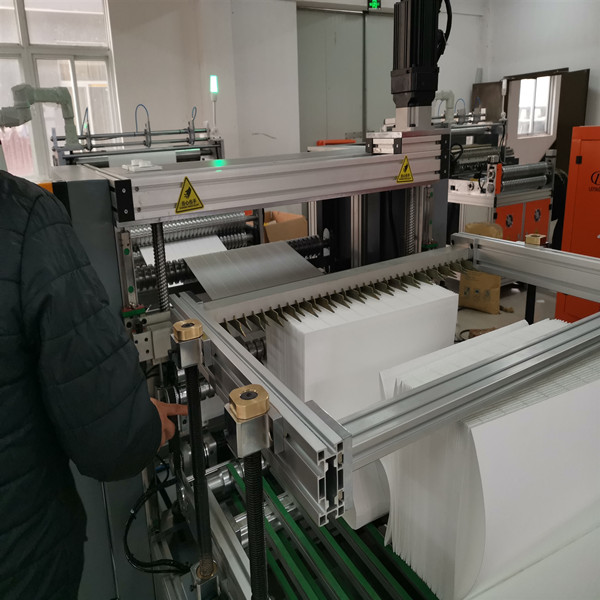
The robust design and manufacturing integrity of these machines contribute significantly to their extended operational lifespan, typically ranging from 15 to 25 years with proper maintenance, significantly outperforming less robust alternatives. Their inherent durability and precision make them indispensable across a variety of demanding industries. In the petrochemical sector, for example, filters produced by these machines are crucial for purifying air in sensitive processing areas, preventing contamination and protecting personnel from hazardous airborne particles. Within metallurgy, they ensure clean air environments for material processing, reducing defects and improving product quality. In water supply and drainage systems, HEPA filters are employed in air ventilation units to prevent airborne contaminants from entering potable water treatment facilities, ensuring public health safety. The ability of the Pleat Machine For Hepa Filters to produce high-integrity pleated media translates directly into filters that offer superior energy efficiency by maintaining low pressure drop over extended periods, and exceptional corrosion resistance due to the quality of the media and the filter's structural integrity, making them ideal for challenging industrial applications where both performance and longevity are paramount.
Technical Parameters & Specifications of Advanced Pleating Machines
Understanding the technical specifications of a hepa pleating machine is paramount for optimizing filter production and ensuring compatibility with diverse media types and application requirements. A comprehensive evaluation of these parameters enables manufacturers to select the most appropriate machinery for their specific production volume, desired filter class (e.g., H13, H14, U15), and operational efficiency targets. Key specifications include pleat height range, which often spans from 8mm to 100mm, allowing for flexibility in filter design and volumetric capacity. The effective pleating width, typically ranging from 600mm to 1600mm, determines the maximum size of the filter element that can be processed, crucial for large industrial filters. Furthermore, the pleating speed, expressed in meters per minute (m/min), directly impacts throughput, with high-end machines achieving speeds of 20-50 m/min, significantly enhancing productivity. These machines are also designed to handle various media thickness, commonly from 0.2mm to 0.8mm, without compromising pleat integrity or damaging the filter material.

The power requirements, usually between 5kW to 15kW, reflect the energy consumption and operational costs, while the machine's dimensions and weight dictate its footprint within a manufacturing facility. Advanced models often integrate features like automatic paper feeding, pre-heating capabilities for certain media, and a precise pleat counting system, all contributing to automated and error-free operation. The control system is typically a PLC (Programmable Logic Controller) with a user-friendly HMI (Human-Machine Interface), enabling intuitive setup, real-time monitoring of parameters like pleat height accuracy (often within ±0.2mm), and diagnostics. Below is a representative table outlining typical parameters for a high-performance hepa filter pleating machine suitable for various industrial applications, showcasing the breadth of capabilities available in modern machinery. These precise specifications underpin the machine's ability to produce filters that not only meet but often exceed global standards, offering consistent performance and reliability that are crucial for critical filtration applications.
Typical Specifications for a High-Performance HEPA Pleating Machine
Strategic Advantages: Optimizing Production with Advanced Pleating Machines
The deployment of an advanced hepa pleating machine offers significant strategic advantages that transcend mere production efficiency, fundamentally transforming filter manufacturing operations. One primary benefit is the unparalleled precision pleating achievable through servo-motor controlled systems, ensuring uniform pleat height and spacing across the entire filter media. This precision is critical for maintaining consistent airflow dynamics and maximizing the effective filtration area within a given volume, directly translating to higher dust holding capacity and longer filter lifespan. Furthermore, automated tension control mechanisms prevent media tearing or deformation, which is a common issue with less sophisticated machinery, safeguarding expensive filter media and minimizing waste. This high level of control is particularly vital for producing filters designed for sensitive applications where even minor inconsistencies can compromise performance, such as in semiconductor manufacturing cleanrooms or pharmaceutical sterile environments, where ISO 14644 standards dictate stringent particulate control.
Beyond precision, modern hepa filter pleating machine models excel in operational efficiency and versatility. High-speed pleating capabilities (up to 50 m/min for some models) drastically reduce production bottlenecks, allowing manufacturers to meet high-volume demands with shorter lead times. The integration of quick-change tooling systems further enhances versatility, enabling rapid transitions between different filter specifications or media types, thereby improving manufacturing agility. These machines are also designed with energy efficiency in mind, utilizing optimized motor drives and intelligent power management systems to reduce electricity consumption, contributing to lower operational costs and a smaller carbon footprint. This is a significant advantage in today’s environmentally conscious industrial landscape. Furthermore, features like automatic error detection, remote diagnostics capabilities, and predictive maintenance alerts minimize downtime, ensuring continuous, uninterrupted production. These combined technical advantages make the investment in a high-quality pleating machine a strategic imperative for any company aiming to dominate the competitive air filtration market by delivering superior products with optimized operational economics.

The robust automation and precision of a leading hepa pleating machine also deliver significant improvements in workplace safety and consistency. By automating the pleating process, manual handling of filter media is greatly reduced, mitigating risks associated with repetitive strain injuries and exposure to certain materials. Moreover, the consistency delivered by automated systems ensures that every filter produced adheres to the same stringent quality standards, reducing variability and improving overall product reliability. For instance, in applications requiring ULPA filters for biosafety cabinets or specialized cleanrooms, the machine's ability to create perfectly uniform mini-pleats is non-negotiable, as it directly impacts the filter's ability to capture particles as small as 0.12 microns with over 99.999% efficiency. This level of consistent performance is unattainable with less advanced or manual methods. The benefits extend to waste reduction, as precise material handling and minimal human error lead to less scrap media, optimizing raw material utilization and contributing to more sustainable manufacturing practices. Ultimately, these strategic advantages empower filter manufacturers to not only produce superior products but also to operate with greater efficiency, safety, and profitability in a highly competitive market.
Navigating the Market: Manufacturer Comparison and Custom Solutions
Choosing the right hepa pleating machine involves a thorough comparison of manufacturers, each offering distinct advantages in terms of technology, customization capabilities, and post-sales support. Leading manufacturers typically differentiate themselves through innovation in control systems, robustness of mechanical components, and their ability to provide tailored solutions for specific production challenges. For example, some may specialize in high-speed production for automotive filters, while others focus on ultra-precision for medical-grade HEPA filters. Factors to consider include the machine's adaptability to various filter media types (e.g., glass fiber, synthetic non-wovens), the maximum pleat height and width achievable, and the sophistication of the Human-Machine Interface (HMI) for ease of operation and troubleshooting. Furthermore, the level of integration with other production line components, such as media unwinding units, hot melt dispensers, and filter cutting systems, is a critical consideration for establishing a fully automated and efficient workflow.
Manufacturer Comparison: Key Differentiating Factors
Beyond standard offerings, many top-tier hepa pleating machine manufacturers excel in providing fully customized solutions. This involves a collaborative design process where the manufacturer works closely with the client to understand their unique production requirements, factory layout, and future expansion plans. Customizations can range from specialized pleating heads for non-standard media widths or thicknesses, integration with existing conveyor systems, to bespoke software modules for data analytics and predictive maintenance. For instance, a client manufacturing filters for very high-temperature applications might require specific materials for the pleating rollers to withstand thermal stress, or a pharmaceutical client might need enhanced cleanroom compatibility with specialized finishes and enclosed systems. The ability to offer such tailored solutions, backed by extensive engineering expertise and a proven track record, significantly distinguishes a premium manufacturer. Engaging with a provider that demonstrates strong R&D capabilities and a history of successful custom deployments ensures that the investment in a pleating machine is not just for current needs but also future-proofed against evolving market demands and technological shifts, maximizing long-term return on investment (ROI).
Real-World Application & Client Success: The Impact of a Pleat Machine For Hepa Filters
The tangible impact of a high-quality hepa pleating machine is best illustrated through its diverse application across critical industries and the measurable success stories of its users. Consider a leading pharmaceutical company that upgraded its filter production line with a new Pleat Machine For Hepa Filters to meet the surging demand for filters in sterile cleanrooms (e.g., ISO Class 5 environments). Prior to the upgrade, the company faced challenges with inconsistent pleat spacing, leading to variable filter performance and higher rejection rates, impacting both material costs and production timelines. After implementing the advanced machine, they reported a 30% increase in production efficiency, a 15% reduction in material waste due to precise pleating and less rework, and a significant improvement in the uniformity of their HEPA filters, leading to consistently higher filtration efficiency and lower pressure drop. This directly translated into enhanced compliance with regulatory standards like FDA 21 CFR Part 210/211 for pharmaceutical manufacturing, strengthening their market position and competitive edge.

Another compelling case involves a manufacturer of HVAC systems that needed to produce high-volume HEPA filters for commercial buildings and data centers, emphasizing energy efficiency. The challenge was to create filters that could maintain high airflow while minimizing energy consumption by the building's ventilation system. By adopting a hepa pleating machine known for its ability to produce mini-pleats with very tight tolerances and optimal geometry, the manufacturer was able to design and mass-produce filters with an exceptionally low initial pressure drop, often 20-25% lower than previous designs. This directly contributed to substantial energy savings for their end-users over the filter's lifecycle, making their HVAC systems more attractive and environmentally friendly. Feedback from customers highlighted the superior performance and extended service life of these new filters, bolstering the HVAC company's reputation for innovation and quality. These examples underscore how investing in a superior pleating machine is not merely a capital expenditure but a strategic move that drives product quality, operational efficiency, and ultimately, market leadership.
The success stories extend to specialized industries, such as the production of filters for biological safety cabinets and clean benches in research laboratories. In these critical environments, the absolute integrity of the filter is paramount to protect both personnel and sensitive experiments from airborne pathogens and contaminants. A manufacturer specializing in these niche filters reported that the consistent, defect-free pleating provided by their advanced hepa filter pleating machine significantly reduced the incidence of "pinholes" or uneven media, which can compromise filtration efficiency at a microscopic level. Their internal testing showed a 99.995% efficiency for 0.3 micron particles, surpassing standard requirements, which was validated through independent third-party testing compliant with EN 1822 or IEST RP-CC001 standards. This superior performance led to new contracts and reinforced their position as a trusted supplier in the highly regulated scientific and medical fields. The comprehensive customer support, including remote diagnostics and rapid spare parts delivery, also contributed to their uninterrupted operation, minimizing downtime and maximizing productivity, demonstrating the holistic value proposition of partnering with a reputable machine provider.
Addressing the Challenges: What are the Two Disadvantages of HEPA Filters?
While HEPA filters are widely recognized for their exceptional filtration capabilities, it is important to acknowledge their limitations to fully understand their application scope and how hepa pleating machine technology contributes to mitigating these. The first notable disadvantage of HEPA filters, from a practical application standpoint, is their susceptibility to clogging and subsequent increase in pressure drop. As HEPA filters efficiently capture microscopic particles (down to 0.3 microns at 99.97% efficiency, or even smaller for ULPA filters), they inevitably accumulate dust and contaminants over time. This accumulation reduces the effective airflow through the filter media, leading to a rise in static pressure differential across the filter. This increased pressure drop demands more energy from the fan or blower system to maintain the required airflow, resulting in higher operational costs and increased wear on the HVAC system components. For instance, a HEPA filter designed to operate at an initial pressure drop of 250 Pa might, after months of use, see that value climb to 500 Pa or more, necessitating premature replacement to avoid energy penalties and reduced air volume in the conditioned space.
The second significant disadvantage of HEPA filters is their inability to remove gaseous contaminants, odors, or volatile organic compounds (VOCs). HEPA filters are designed solely for particulate filtration, physically trapping solid particles. They do not possess the chemical adsorption or absorption properties necessary to remove molecular contaminants. This limitation means that in environments where both particulate and gaseous pollutants are present—such as laboratories handling chemicals, industrial facilities with solvent emissions, or commercial spaces with lingering odors—a standalone HEPA filter is insufficient. To address this, HEPA filter systems often require integration with additional filtration stages, specifically activated carbon filters or chemical filters, which are capable of adsorbing gaseous contaminants. This multi-stage filtration system, while effective, adds to the complexity, cost, and physical footprint of the air purification solution. Understanding these inherent limitations of HEPA filters is crucial for designing comprehensive air quality management strategies and highlights the necessity for specialized, complementary filtration solutions in various critical applications.
Ensuring Trust & Support: FAQs, Delivery, and Warranty
Frequently Asked Questions (FAQs)
-
Q: What is the typical lead time for a custom Pleat Machine For Hepa Filters?
A: The lead time for a custom hepa pleating machine typically ranges from 12 to 16 weeks, depending on the complexity of the customization and current production schedule. Standard models usually have a shorter lead time of 8-10 weeks. Our team provides a precise timeline upon consultation and finalization of specifications.
-
Q: How does your machine ensure consistent pleat height and spacing?
A: Our Pleat Machine For Hepa Filters incorporates advanced servo-driven indexing systems and high-precision tooling. These components are meticulously manufactured via CNC processes with tolerances as low as ±0.005mm and are coupled with real-time feedback loops from sensors to ensure consistent pleat height and uniform spacing, meeting even the stringent requirements for ULPA filters. This prevents media bunching or stretching, critical for optimal filter performance.
-
Q: What kind of after-sales support and technical assistance do you offer?
A: We offer comprehensive after-sales support, including remote technical assistance, on-site installation and commissioning, operator training, and preventative maintenance programs. Our dedicated support team is available 24/7 for critical issues, leveraging remote diagnostic tools to minimize downtime. We also maintain a comprehensive inventory of spare parts for rapid dispatch.
-
Q: Are your machines compliant with international safety and quality standards?
A: Absolutely. All our hepa filter pleating machine models are designed and manufactured in strict adherence to international safety and quality standards, including CE marking for European market compliance, ISO 9001 quality management system certification, and relevant ANSI/ASME mechanical engineering standards. Our commitment to these benchmarks ensures reliability, safety, and consistent performance.
Delivery Cycle & Logistics
Upon order confirmation and finalization of specifications, our typical delivery cycle for a Pleat Machine For Hepa Filters is approximately 10-14 weeks for standard configurations and 14-18 weeks for highly customized units. This timeframe includes manufacturing, rigorous quality assurance testing, and pre-shipment preparation. We work with globally recognized logistics partners to ensure secure and timely delivery to your facility, whether by sea freight or air cargo, depending on your urgency and budget. All machinery is professionally crated and protected for international transit, minimizing any risk of damage during shipment. Our logistics team provides transparent tracking and regular updates throughout the delivery process, ensuring you are fully informed from dispatch to arrival. We also assist with customs documentation to facilitate a smooth import process in your region, streamlining the entire acquisition experience for our clients worldwide.
Warranty & Service Commitment
We stand behind the quality and reliability of our Pleat Machine For Hepa Filters with a comprehensive 2-year warranty on all mechanical and electrical components from the date of installation. This warranty covers manufacturing defects and failures under normal operating conditions. Beyond the initial warranty period, we offer extended warranty options and service contracts tailored to meet your long-term operational needs. Our commitment extends to providing continuous technical support and readily available genuine spare parts, ensuring your hepa pleating machine operates at peak performance for its entire lifespan. Our service engineers are factory-trained experts capable of providing both remote and on-site troubleshooting, maintenance, and repair services. We believe that exceptional post-sales support is as crucial as the quality of the machine itself, fostering long-term partnerships built on trust and mutual success. This robust support system is integral to our commitment to maximizing your production uptime and return on investment.
Conclusion: The Future of Filtration Relies on Precision Pleating
The continuous evolution of air quality standards and the escalating demand for high-performance filtration solutions across diverse industries underscore the indispensable role of advanced hepa pleating machine technology. From the meticulous engineering and material selection to the integration of cutting-edge automation and intelligent control systems, the Pleat Machine For Hepa Filters represents the pinnacle of precision manufacturing. Its ability to produce consistently high-quality pleated media directly translates into HEPA filters that offer superior efficiency, extended lifespan, and optimized energy consumption—attributes critical for applications ranging from pharmaceutical cleanrooms and data centers to industrial air purification systems. While acknowledging the inherent limitations of HEPA filters in terms of gas removal and pressure drop, the advancements in pleating technology continuously strive to mitigate these challenges by maximizing filter media utilization and ensuring uniform airflow.
Investing in a top-tier hepa filter pleating machine is more than an operational upgrade; it is a strategic decision that drives competitive advantage, enhances product quality, and ensures compliance with increasingly stringent global regulations. Manufacturers who prioritize robust construction, technological precision, and comprehensive after-sales support position themselves as leaders in a market driven by innovation and reliability. As industries worldwide continue to seek cleaner, safer, and more energy-efficient environments, the demand for meticulously crafted HEPA filters will only intensify, making the role of the pleating machine ever more central to the future of air filtration. This commitment to engineering excellence and customer success solidifies the foundation for a healthier, more productive world, one precisely pleated filter at a time.
References & Further Reading
- International Organization for Standardization. ISO 14644: Cleanrooms and associated controlled environments. Geneva, Switzerland.
- European Standard EN 1822: High efficiency air filters (EPA, HEPA and ULPA). Classification, performance testing, marking.
- Institute of Environmental Sciences and Technology. IEST RP-CC001: HEPA and ULPA filters. Rolling Meadows, IL, USA.
- U.S. Food and Drug Administration. 21 CFR Part 210/211: Current Good Manufacturing Practice for Finished Pharmaceuticals.
- ResearchGate. Advancements in Air Filtration Technologies for Industrial Applications.
Post time: Aug-17-2025



